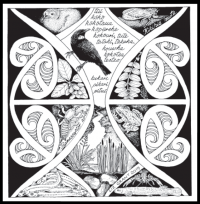Pūtaiao Issue 1, February 2020

Tēnā koe and welcome to the first issue of Pūtaiao (“Science” in te reo Māori), a new quarterly publication showcasing the work of our scientists at Manaaki Whenua.
We are the Crown Research Institute for our land environment, biosecurity and biodiversity, and our role and responsibility to New Zealand is clear: this land, and everything that shares it with us, is our future.
Each issue of Pūtaiao will share the benefits and impacts of our science in helping to ensure a sustainable, productive future for New Zealand. In this issue we’re focusing on science for our land – one of our four “science ambitions” at Manaaki Whenua.
Although as a nation we’re familiar with concerns about water quality – about swimmable rivers and clean drinking water – the land is truly where the story of our water resources begins. Rivers, lakes and streams surround and flow through our land, so how we use our land is critical to our waterways.
As you’ll see in the pages that follow, our scientists work with and alongside farmers, iwi, policymakers, the public, and many government and science organisations. Our aims are to enable New Zealanders to use land more sustainably, better use resources for intergenerational well-being (he whenua koiora), better protect and restore land and soil resources, and reduce the impact of land use on freshwater resources.
In this issue

What’s happening on our land?
In the past six years, more than half a million hectares of New Zealand’s land cover have changed, according to the latest version of New Zealand’s Land Cover Database.

Getting smarter about sediment control
New Zealand is losing 192 million tonnes of soil each year due to erosion, the equivalent of more than 7 million dump-truck loads. Almost half of this loss is from pastoral land.

Lucerne without effluent for less N and more C
Keeping our waterways healthy has a lot to do with what we apply to our land. Nitrate leaching has been a hot topic for the past decade. Dairy farming in New Zealand has faced ongoing scrutiny for nitrate leaching following conversion of dryland areas on stony soils to intensive dairy farming, irrigating using dairy effluent as well as water to encourage pasture growth.

Reducing the effects of land intensification
Irrigation usage remains a hot topic in New Zealand. Since the late 1970s the area of farmland in New Zealand under irrigation has doubled every 12 years. New irrigation systems introduced over the past two decades have given farmers and growers the ability to adapt to demand and accurately apply water at appropriate intensities to their land.

Building whakawhanaungatanga in Waikato and the Bay of Plenty
In Aotearoa, Māori have a deep relationship and spiritual connection with the natural world, including ngā koiora katoa – all livings things in it. For Māori, elements of ecosystems and their links form the basis of whakapapa (ancestry) and kaitiakitanga (guardianship/management), and are crucial in upholding their taonga, traditions, health and well-being. Over time, the development and intensification of land has resulted in degraded ecosystem services and loss of biodiversity for tangata whenua and iwi.

A special mātauranga Māori issue of the NZ Journal of Ecology
Manaaki Whenua has contributed to the first special issue of the NZ Journal of Ecology that focuses on mātauranga Māori. The issue, ‘Mātauranga Māori and shaping ecological futures’, was launched at Lincoln University in December.

Sharing our knowledge abroad
For decades, soil scientists from Manaaki Whenua have been visiting Pacific Island countries and territories (PICTs) to collect soil samples and map soil patterns. This information is now available online via the Pacific Soils Portal.

Predator Free 2050
A new research programme has recently got underway aimed at eliminating the last predator survivors in New Zealand to help achieve the goal of Predator Free 2050.

Celebrating our achievements

Role playing: Could this be the next way of thinking?
Peter Edwards recently led the development of serious role-playing game called Catchment 2030, inspired by the complex erosion problems in the Waiapu catchment.

